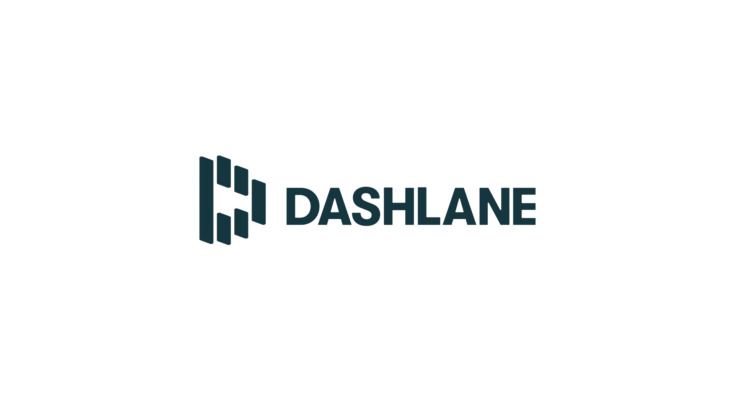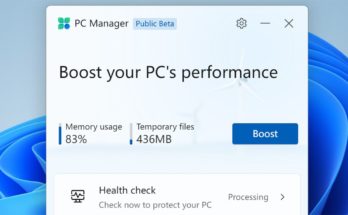
Dashlane has earned itself a reputation for being one of the best password managers out there, with great security, a simple interface, and reasonable pricing. I took it out for a spin to see if its reputation held up.
In all honesty, it did. Though Dashlane isn’t perfect—there are some minor interface issues, and the pricing doesn’t always work out—it’s definitely one of the best choices out there when it comes to managing your passwords. If you’re still shopping for a password manager, Dashlane deserves your attention.
Índice
What Is It Like Using Dashlane?
Dashlane has two interfaces: the first is its web app, which is available for all browsers. This is where you’ll manage your passwords and account. Second is the browser extension, which is available for Google Chrome, Microsoft Edge, Safari, and Firefox (This link will auto-detect your browser, regardless of which one you’re using).
The mobile app, which is available for Android and iPhone/iPad, combines the functionality of the browser extension and the web app, so it may serve as a better control room for some people. For this review, I mainly used the web app and browser extension on Chrome, only dipping into the mobile app to see if there were any major issues (there were not).
Dashlane’s Web App
The web app’s main screen is utilitarian and a little sparse but gets the job done. To the left is a navigation bar that shows you the different types of entries Dashlane can handle, and to the right is the main screen, where you can see what each category holds. It’s extremely basic, but it works.
Besides logins, Dashlane lets you add IDs and personal details, credit card information, as well as secure notes. 1Password and a few other password managers let you do much the same, though I like how personal info (email addresses and the like) and the information on your IDs are kept separate. If, like me, you have several email addresses, it’s a handy way to keep track of them.
If you want to add a new entry to any of these categories, a pane to the right of the screen will open up, letting you play around with a number of settings. I like how Dashlane handles this: besides having you fill in the usual email address or login name and password, there are also some very specific but extremely useful extra options you can tick.
For example, you can have Dashlane log you in automatically to certain sites or even specifically make you enter your master password (the one for Dashlane itself) on certain sites. I like this a lot because you can decide which sites you want to be lax with (like my free New York Times account) and which you feel need some extra security (your personal bank account, say).
So far, so good, but I do have to say I’m less impressed with how Dashlane lets you categorize entries. You can only pick from a pre-selected list of types (news, entertainment, tech, etc.), and there’s no way to filter according to type, at least not really. If you’re really into organizing your passwords just so, 1Password or Bitwarden may be a better choice.
Dashlane Autofill
However, this is only one part of what a password manager does. The other is how it helps you navigate the web by offering to remember passwords and auto-filling them as you go. Overall, I was impressed with Dashlane in this regard. Pretty much any site you visit, you’ll either see Dashlane’s autofill notification appear near an entry field or the offer to save a new password.
It’s bordering on ridiculous how good Dashlane is at this. I used it for a few days, and I never had to open the browser extension while browsing. Dashlane handled all the work for me; no copy-pasting was required. It was great.
However, that doesn’t make the browser extension redundant, either: think of it as a pocket version of the main interface where you can get on-the-go information about what logins you have, letting you add and remove entries on the fly. It’s solid.
Overall, minor gripes aside, I like how Dashlane handles. Other password managers could learn from how it works. If ease of use is a priority for you, Dashlane may be just the ticket.
How Much Does Dashlane Cost?
Dashlane’s pricing is a little confusing as it has a lot of different plans with different features. The most basic plan is the free one, which I used to test the password manager out. I really liked it, and it comes with everything you need in a password manager, though it has a big caveat that you can only use it on one device. This renders it kind of useless for most people; the free plan is more an extended trial than anything.
To remove this cap, you’ll have to pay $33 per year for the Advanced plan, which lets you use as many devices as you’d like and also adds dark web monitoring, a feature that scans the web to see if any of your passwords have made it onto hackers’ lists. Bitwarden has similar functionality, as do most other password managers.
The next tier is the Premium plan, which costs just under $60 per year and adds a VPN to the package. This is a pretty good deal, or at least I assume it is, as I haven’t actually tested the VPN. However, assuming that it’s up to snuff, it would make Dashlane one of the cheapest VPNs out there, considering most standalone services already cost $60 per year.
That said, for that money, you do get some of the best VPNs out there, and I have a feeling Dashlane may not be quite up to that league yet.
The final tier is the Friends and Family plan, which is $75 per year for up to 10 people, and includes the VPN. This is a really good deal. Even if the VPN were complete crud, it’s a lot cheaper than most other family plans (Bitwarden’s excluded) and you do get a whole lot of password manager back for that money.
Dashlane Business Plans
Dashlane also offers plans aimed at businesses. The first plan, appropriately named Starter, offers a flat rate of $240 per year for up to 10 people. For this, you get a number of handy little features, my favorite of which is probably the audit logs, which let you get an idea of what people are logging into and when.
If you have more than 10 people on your team, you’ll have to go over to the Team plan, which is $60 per year per member, and throws in the VPN for the extra cost. In contrast to its personal equivalents, this isn’t as good a deal as a VPN usually is a flat fee, regardless of how many people sign on—or you can just install it on the office router. The Team plan may end up costing you more than necessary.
Finally, we come to the Business plan, which is $96 per person per year. You get a lot of goodies for that money, though, including advanced security options and personal plans for all members. Still, one hundred bucks per person per year is a lot of money for a password manager.
Is Dashlane Safe?
Of course, price and ease of use are wonderful, but the most important thing with password managers is whether they’re safe or not. Dashlane raises few flags here and seems to be as safe as can be, or at least as safe as all our other favorite picks.
Like any password manager worth its salt, Dashlane keeps all your data safe through encryption, meaning that even if a hacker made off with your data, they couldn’t do much with it unless they have a few billion years spare to crack the code.
Of course, the weak point in this setup is your master password: were somebody to find that out and get their hands on your vault, they’d have full access. Dashlane prevents this scenario from happening by using what’s called zero-knowledge security: you, and only you, know your password. Dashlane does not store the master password anywhere.
Of course, this also means that the biggest weakness is you. You should keep your master password safe and not write it down somewhere it’s easily found, like an online note-taking tool or on a Post-it note stuck to your monitor.
Dashlane also doesn’t make use of password hints because they create weaknesses—your mother’s maiden name or your high school is pretty easy information to figure out. The company also regularly conducts audits of its security, though it’s a little close-mouthed about how exactly these work.
Finally, and maybe most importantly, Dashlane has no history of scandal. In an industry where vaults are under constant attack, this may be the most important metric of all—just ask LastPass.
Should You Sign Up for Dashlane?
Overall, I really like Dashlane, especially its ease of use. Few password managers offer this smooth of an experience, though I do wish there were better organization options. If you’re thinking about signing up, in my opinion, the Advanced and Family and Friends plans offer the best value, and both come with a 30-day free trial.
Dashlane Password Manager
- Easy to use
- Fantastic auto-fill options
- Some great pricing plans
- Not all plans are equally good
- Minor issues with password organization
- Not open source








